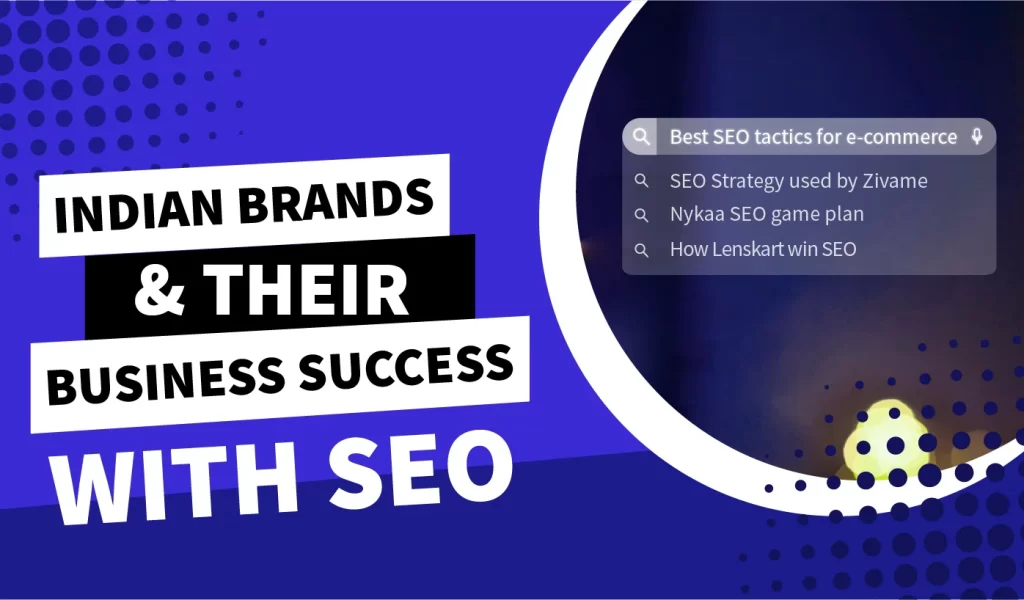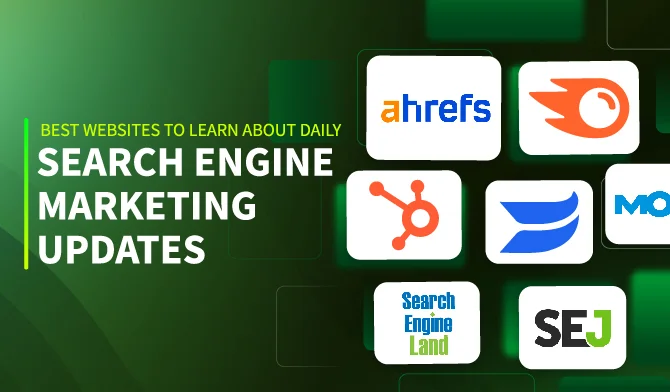B2C vs D2C: Understanding the Advantages, Disadvantages, and Difference
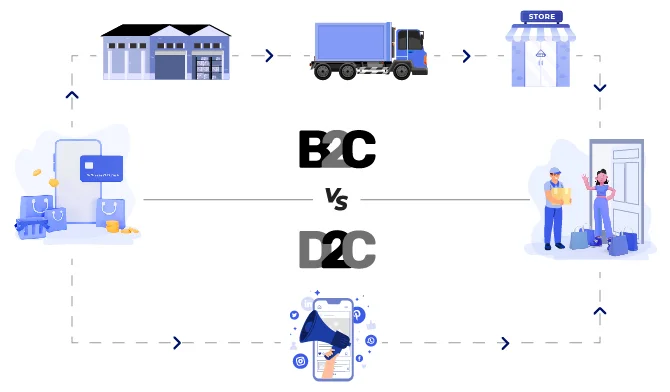
In the business world, there are two main models for selling products: business-to-consumer (B2C) and direct-to-consumer (D2C). B2C refers to the traditional model of selling products through intermediaries such as retailers, while D2C involves selling products directly to consumers through an online store or other channels. Both models have their advantages and disadvantages, and understanding the differences between them is important for businesses looking to sell products to consumers.
What is B2C?
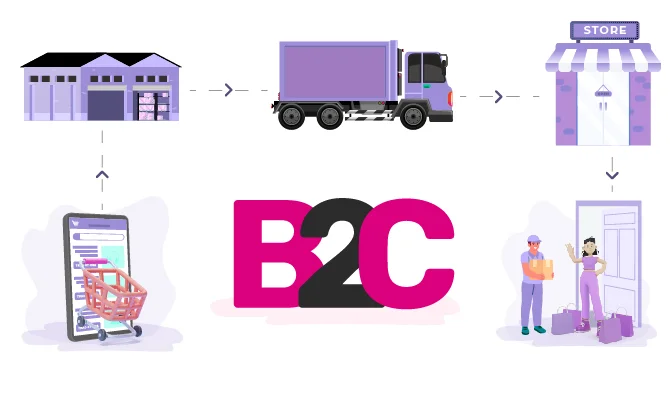
B2C is a business model where companies sell their products or services directly to consumers through intermediaries such as retailers, wholesalers, or distributors. The intermediaries purchase products from manufacturers at a wholesale price and then sell them to consumers at a retail price. The advantages of B2C include convenience for consumers, a wider potential customer base, and the ability to leverage the marketing efforts of intermediaries. However, the disadvantages of B2C include increased competition and lack of personalization.
Advantages of B2C business
Large and varied market: The B2C market is large and diverse, which gives companies the advantage of targeting a significant number of consumers. Even small businesses operating from home can sell their products or services to customers on the other side of the world.
Convenience for consumers: B2C businesses offer convenience to consumers by allowing them to purchase products or services from the comfort of their homes. Consumers can browse products online, place orders, and receive them at their doorstep, saving them time and effort.
Wider potential customer base: B2C businesses can reach a wider audience through various channels, including social media, email marketing, and online advertising. This allows them to attract new customers and increase sales.
Leverage intermediaries’ marketing efforts: B2C businesses can leverage the marketing efforts of intermediaries such as retailers, wholesalers, or distributors. These intermediaries purchase products from manufacturers at a wholesale price and then sell them to consumers at a retail price, promoting
Disadvantages of B2C business
Lower margins: B2C businesses often face intense competition from other businesses selling similar products or services, which can drive down prices and lead to lower profit margins.
More risk: The B2C business model can be riskier than the B2B (Business-to-Business) model because the success of the business is heavily dependent on consumer demand. If consumer preferences change or the economy experiences a downturn, B2C businesses may struggle to survive.
High customer acquisition cost: Acquiring new customers can be expensive for B2C businesses. They may need to invest heavily in marketing and advertising to attract and retain customers.
Limited customer loyalty: B2C businesses often face challenges in building customer loyalty. Consumers have a wide range of options to choose from, and they may switch to a competitor if they find a better deal or experience.
What is D2C?
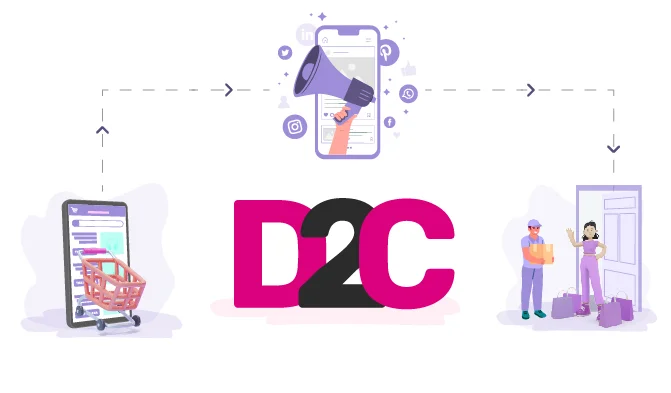
D2C is a business model where companies sell their products or services directly to consumers without intermediaries. D2C companies typically sell products through an online store or other channels such as social media or pop-up shops. The advantages of D2C include greater control over the customer experience, higher profit margins, and the ability to build a direct relationship with customers. However, the disadvantages of D2C include the need for significant upfront investment and the challenge of building brand awareness.
Advantages of D2C business
Greater control over the customer experience: D2C businesses have complete control over the customer experience, from product design to delivery. This allows them to create a unique and consistent brand experience that can help build customer loyalty.
Higher profit margins: By eliminating intermediaries such as retailers or wholesalers, D2C businesses can sell products at a higher profit margin. This allows them to reinvest profits into the business, which can help fuel growth.
Ability to build a direct relationship with customers: D2C businesses can build a direct relationship with customers, which allows them to gather data and feedback to improve their products and services. This can also help them create personalized marketing campaigns and promotions to target specific customer segments.
Flexibility and agility: D2C businesses are often more flexible and agile than traditional businesses because they can quickly adapt to changing consumer preferences and market trends. This allows them to stay ahead of the competition and innovate in ways that traditional businesses may not be able to.
Disadvantages of D2C business
Need for significant upfront investment: D2C businesses require significant upfront investment in areas such as product development, marketing, and logistics. This can be a barrier to entry for some entrepreneurs or small businesses.
Challenge of building brand awareness: D2C businesses may struggle to build brand awareness and reach a wider audience, especially if they are a new or unknown brand. This can make it difficult to attract new customers and compete with established brands.
High customer acquisition cost: Acquiring new customers can be expensive for D2C businesses, especially if they rely on paid advertising or other marketing channels. This can put pressure on profit margins and make it difficult to scale the business.
Logistics and fulfillment challenges: D2C businesses are responsible for handling logistics and fulfillment, which can be complex and time-consuming. This includes everything from shipping products to handling returns and exchanges.
Differences between B2C and D2C
The main differences between B2C and D2C are in the distribution channels, marketing strategies, and customer relationships. B2C companies rely on intermediaries to distribute their products and often use mass marketing techniques to reach a wide audience. D2C companies, on the other hand, sell directly to consumers through online stores or other channels and often use targeted marketing techniques to reach a specific audience. D2C companies also have a direct relationship with their customers, which allows them to gather data and feedback to improve their products and services.
Examples of B2C in India
There are many successful B2C businesses in India, including Amazon, Flipkart, and BigBasket. These companies sell a wide range of products online and rely on intermediaries such as delivery partners to distribute their products. They also use mass marketing techniques such as advertising and promotions to reach a wide audience.
Examples of D2C in India
There are also many successful D2C businesses in India, including Mamaearth, boAt, and Wakefit. These companies sell their products directly to consumers through online stores and social media channels. They also use targeted marketing techniques such as influencer marketing and referral programs to reach a specific audience.
Conclusion
In conclusion, both B2C and D2C have their advantages and disadvantages, and businesses should carefully consider which model is best suited to their products and target audience. B2C may be more appropriate for businesses with a wide range of products and a need for broad distribution, while D2C may be more appropriate for businesses with a niche audience and a desire for greater control over the customer experience. Ultimately, the success of any business model depends on the quality of the products and services offered, as well as the effectiveness of the marketing and distribution strategies employed.

